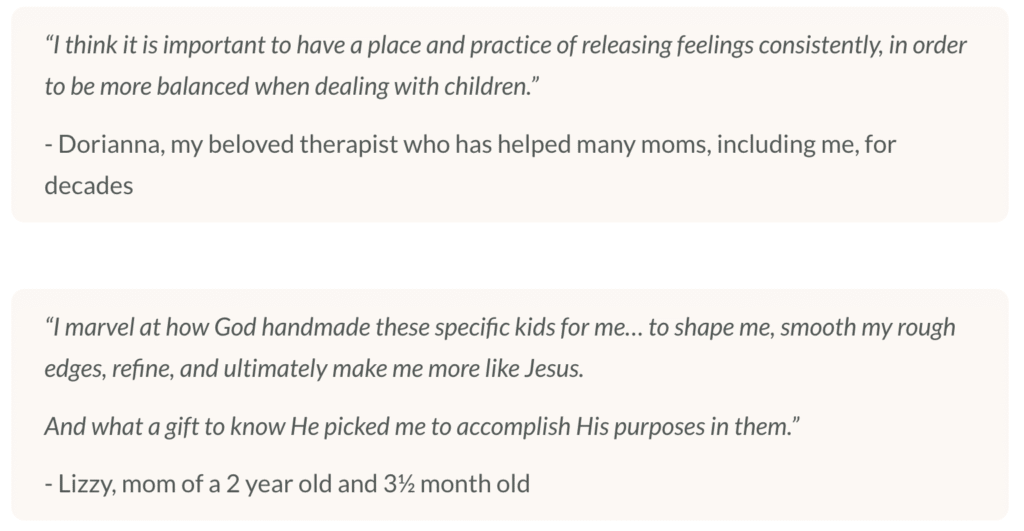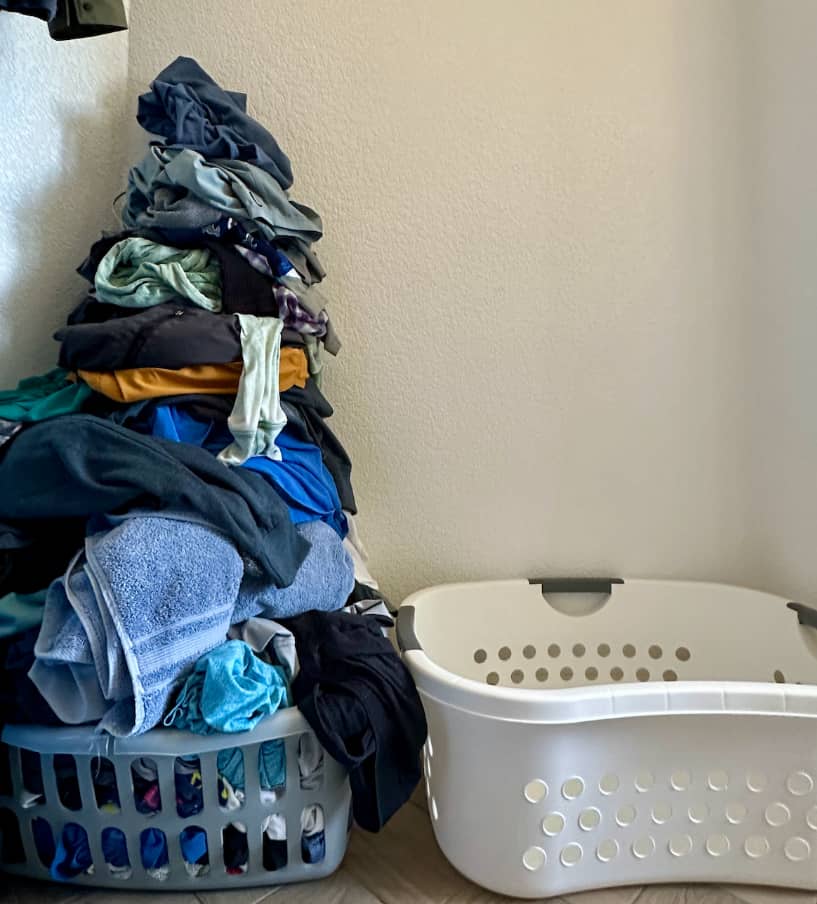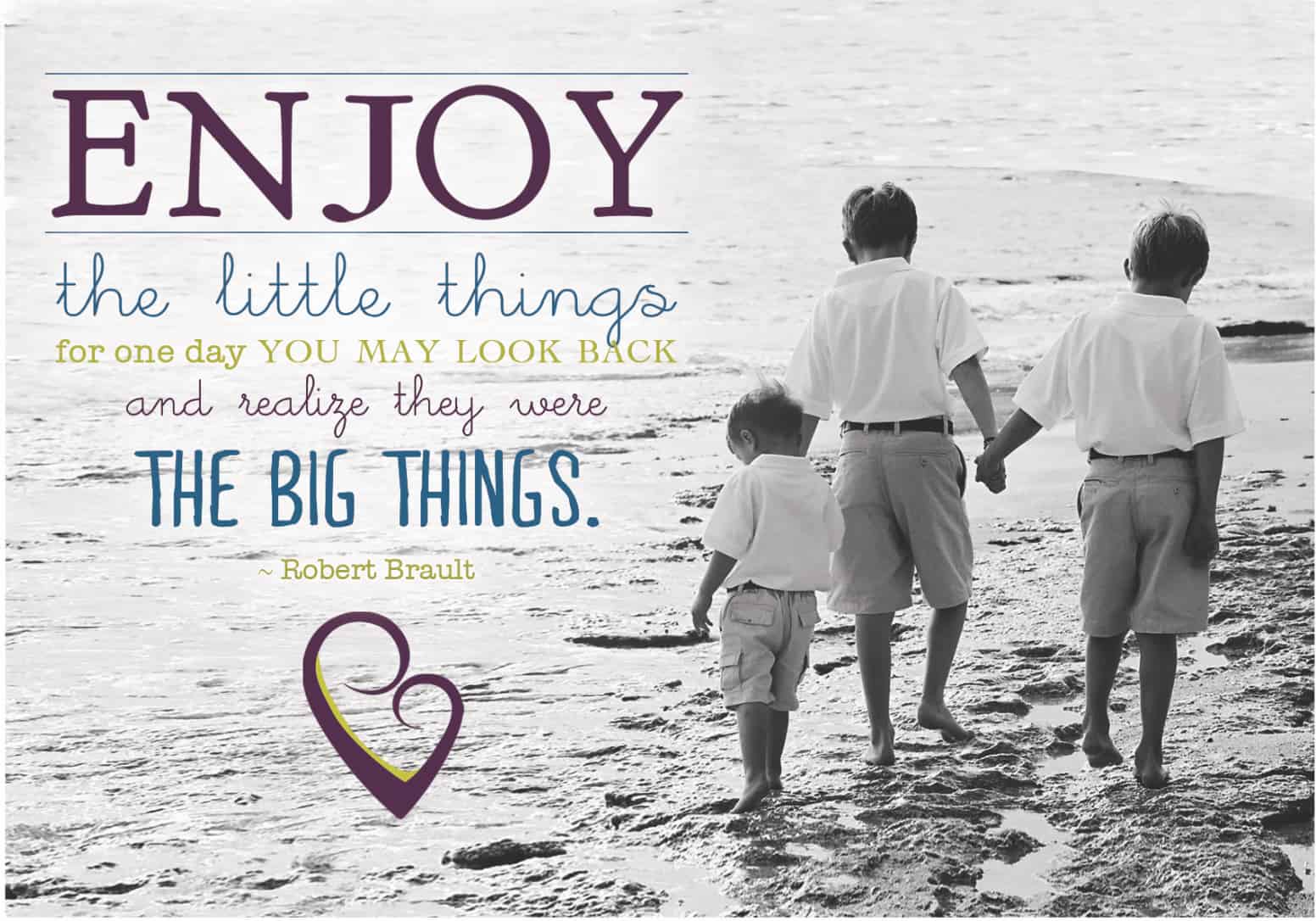Kerry here!
Four years ago, I visited a friend with her new baby. After going through the intensity of childbirth herself, she was in absolute awe that every single one of us on this planet has someone who did that for us. She laughed at herself, saying that even when she went to a restaurant, she’d tell the server that she had a baby. It was a sense of, “Oh my gosh, can you believe what I just went through to give life to another person?!?!”
I will always carry that conversation with me. All of us have a mother who did that for us. And as I watch two of my newborn grandsons be so well cared for around the clock, I’m reminded that none of us made it to adulthood on our own.
Mothering as a paradox. While we are raising our children, it is never-ending service to the well-being of another. We mothers do so many things for the sake of our children, even when it comes at our own expense. And that is beautiful because it keeps the children alive.
The paradox comes when we mothers end up feeling like we were the ones given a gift. It happens when we realize how much we are growing, learning, and evolving as we work in the service of escorting our beloved children to self-sufficiency. The learning doesn’t come easy, that’s for sure! And it definitely isn’t always comfortable. But in the end, I think most every mom would say it’s been a gift to be a mother.
On this Mother’s Day, I’ve brought in the voices of some other moms. I asked them about the gifts they’ve received as mothers. Their children range in age from 3½ months to 49 years.

“I’ve learned that I cannot make everything right for my children. I cannot take away their pain. I cannot create a perfect life for them so they don’t have pain. I cannot make them be happy.
That is their job.
I’ve learned that what I can do is show up and love. I can hold space for my kids to have their feelings. And in that I have found freedom – freedom from having to make their life perfect so they can have the perfect life that I didn’t have.”
– Beth, mom of 29 and 27 year olds

“The gift of motherhood is that you get the opportunity to ‘Live fully alive’ (as Kerry talks about) – deeply feeling the full range of feelings: love, empathy, sadness, gratitude, and fear… and sometimes that’s all in a day, or just in one parent-teacher conference.”
– Sarah, mom of 17 and 13 year olds



“Being a mother has allowed me to feel much closer and in tune to the Divine Mother, who blesses us all.
Before becoming a mother, the concept of a Divine Mother was merely a concept. Becoming a mother allowed Her to become real in my heart.”
– Joyce, mom of 49, 43, and 36 year olds

“Give yourself grace and keep resetting and restarting when you feel like you’ve failed. Every day is a new day to keep showing up the way you want. Apologize when you need to that’s how kids learn to do that. show healthy emotion so that they learn healthy emotion.”
– Teresa, mother of 22 and 17 year olds

For me, this act of mothering is less about shaping and directing my children and more about providing what each one uniquely needs in order to let their light shine. My hope is that when I take my last breath, they will have felt seen, known, honored, and loved by me for the unique, beautiful souls they are.
To my own mom—thank you. In your attributes and imperfections, you have loved me well, and I am grateful. When I walk into memory care to visit and your face lights up and tears of joy run down your cheeks, I feel cherished and deeply grateful for your enduring love.
And to Keaton, Palmer, Landon, Paul, Jeff, Molly, Lizzy, Anabelle, Bon, Adeline, AJ, James, Maggie, and Avery—you have been a source of love, wonder, and joy. It’s an honor to be your mom, stepmom, grandma, mother-in-law, and godmother. Thank you for all the fun, lessons, and challenges along the way.
So on this Mother’s Day, let’s soak in gratitude for the gift of life from our mothers—imperfect as they may be. They were learning and winging it too, just like we are.
Let’s also be grateful for the ways our children teach and shape us as we love them. Hit “reply” and share what you’ve learned from mothering your children – we’d love to hear!
And celebrate yourself—for showing up with tenacity and courage on this best and hardest journey of motherhood.
Sending you love and wishing you a wonderful Mother’s Day!












